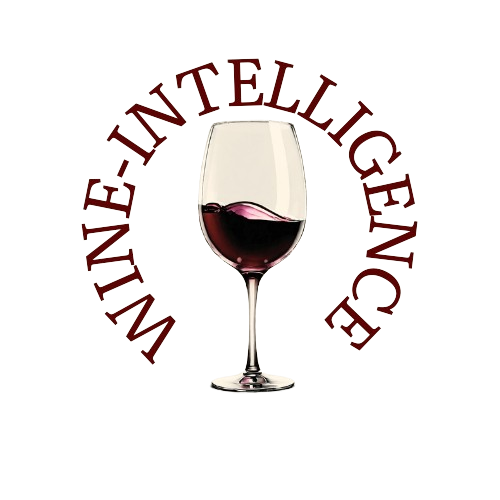The global fine wine market has reached an estimated value of EUR 30 billion in 2024, solidifying its role as a pivotal player within the EUR 1.48 trillion global luxury sector.
Despite accounting for just 1.5% of global wine volume, fine wines command 11% of the total market value, highlighting their premium positioning and growing appeal among collectors, connoisseurs, and luxury consumers alike.
These findings emerge from the inaugural Fine Wines and Restaurants Market Monitor report, a collaborative effort by Bain & Company and Altagamma, presented at Vinitaly 2024, one of the world’s leading wine and spirits exhibitions.
A Confluence of Luxury, Indulgence, and Investment
According to Claudia D'Arpizio, Bain & Company partner and lead author of the study, fine wine sits “at the crossroads of luxury, celebration, and investment.” From daily indulgences for high-net-worth individuals to celebratory moments and long-term collections, fine wine continues to hold a multifaceted role. With price appreciation outpacing other luxury goods like jewelry and handbags, fine wine is also gaining recognition as a resilient alternative investment asset.
In fact, Liv-Ex indices—notably Champagne-50 and Italy-100—grew by 34% and 20% respectively over the last five years, reflecting investor confidence in the sector’s long-term potential.
Fine Dining and Wine: A Symbiotic Rebound
The fine dining sector has also bounced back strongly, experiencing 27% growth from 2022 to 2024, reaching EUR 28 billion. Europe leads the charge, home to over 7,000 of the world’s 14,000 high-end venues. With wine pairings accounting for up to 40% of starred restaurant revenues, fine wines have firmly entrenched themselves as culinary cornerstones.
Post-pandemic shifts have ushered in demand for authenticity, emotional connection, and social dining experiences. Immersive venues that blend food with entertainment and culture are expected to represent 15–20% of the market in 2024, and sparkling wines—especially Champagne—are seeing increasing integration into wine tourism and experiential offerings.
Market Structure: Fragmented but Powerful
While top brands such as those from France and Italy hold a combined 35% of the market, the rest of the market is made up of over 400 small producers, making the fine wine industry more fragmented than other luxury sectors like fashion and design. The market itself is structured around three main segments:
- Collector wines (EUR 1–2B)
- Connoisseur wines (EUR 8–9B)
- Cult wines (EUR 19–20B)
This segmentation mirrors varying consumer profiles and motivations—from enthusiasts seeking unique experiences to investors managing diversified portfolios.
Regional Insights: A West-Centric Sector with Eastern Promise
Currently, Europe accounts for 75% of fine wine production, while Europe and the Americas dominate consumption with an 80% share. However, Asia-Pacific (APAC) and Middle East & Africa (MEA) are showing rising demand, spurred by luxury tourism, growing middle classes, and expanding expat populations.
APAC’s growth is diversifying beyond China, with Japan and Southeast Asia leading new demand channels. In the MEA, luxury resorts and urban hubs are contributing to an uptick in consumption and investment interest.
Generational Shifts and the “Drink Better” Ethos
Despite a 2–3% decline in 2024, attributed to inflation and cautious consumer spending, the long-term shift toward premiumization is firmly underway. Post-COVID trends have reinforced the “drink better, not more” philosophy, with fine wines standing as symbols of refined taste and conscious consumption.
That said, younger generations—especially Gen Z—are embracing NoLo (No and Low Alcohol) trends, challenging producers to innovate with lighter, healthier offerings while preserving the identity and quality expected in the fine wine domain.
Climate Change: A Challenge and an Opportunity
The climate crisis is reshaping traditional viticultural maps. Southern Europe is facing +3°C temperature rises and -50mm rainfall deficits, while cooler regions like Denmark may become future wine-producing hubs. Without swift adaptation, traditional grape varieties such as Cabernet Sauvignon may need to migrate northward.
Producers are investing in climate resilience, including vineyard restructuring, dealcoholized wines, and digital traceability, while policy reforms aim to modernize the industry under EU strategies.
M&A and Market Consolidation on the Rise
The fine wine industry is also undergoing rapid consolidation, especially in the United States, where 30 M&A deals annually total EUR 8 billion, with values doubling from 2022 to 2023. In Europe, France and Italy have closed 10 notable deals in 2024, driving innovation, growth, and competitive dynamics in a traditionally fragmented space.
Outlook: From Prestige to Resilience
Despite near-term headwinds—including potential new tariffs from the U.S. on European wines—the fine wine market is poised for steady growth, projected to reach EUR 35–40 billion by 2030, with a 4–6% CAGR from 2025 onward.
As Federica Levato of Bain & Company notes, “The fine wine sector continues to evolve, balancing tradition with innovation. While the market faces short-term headwinds, its fundamentals remain strong, positioning it as a core component of the luxury landscape for years to come.”
Source: Yahoo Finance

